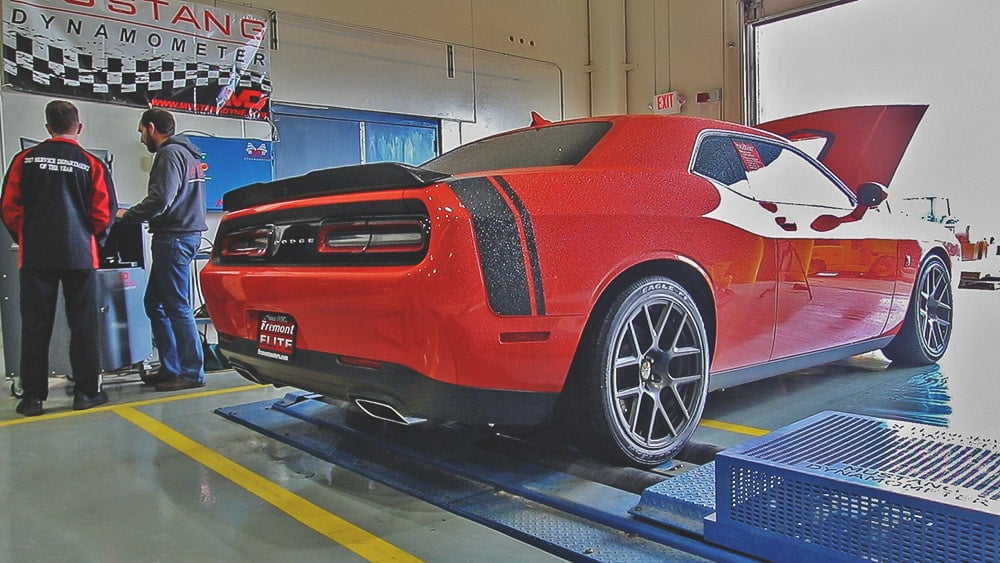
On a wet and snowy afternoon, myself and Jason Wagner (Service Manager at Casper Dodge) went for a trip to Casper College.
No, we weren’t going to sit in a math class, but instead took some cars to show students in the Automotive program at the college.
It was a demonstration with a purpose. For students to learn.
What better way to do that than put a Challenger Scat Pack on the dyno and a Charger Hellcat on the dyno!
What is a dynamometer?
A dyno (for short) is a piece of equipment that measures horsepower, torque, and rotational speed simultaneously.
There are two types of dyno’s; an engine dyno and a chassis dyno. For an engine dyno, the engine has to be removed from the car. A chassis dyno, also known as a rolling road, is where the car is placed on rollers in the ground. Within chassis dyno’s there are 2WD dyno’s and 4WD dyno’s.
Having a car go through a dyno test can tell us lots of information about the car. For example, if you have big plans to tune your car, you’ll need to know the starting point.
A dyno run for your car can also help a trained technician diagnose potential problems. Issues such as loss of power, engine surging, engine pinging, fuel problems, and poor gas mileage.
As a gear head, just feeling the vibrations from the car, hearing the loud exhaust notes and a V-8 rumble is a sensory journey of bliss not for the faint-hearted.
Horsepower
When manufacturers quote horsepower figures, they will usually quote the horsepower at the flywheel or crank (bhp).
This is a different number than the horsepower that actually meets the road through the wheels and tires. Referred to as wheel horsepower (whp).
Confusing a little yes, because flywheel has the word ‘wheel’ in it, but when referring to whp, it means the wheels with tires.
A chassis dyno like the one at Casper College will tell us how much horsepower the car has to the wheels (whp).
Horsepower to the wheels is less than horsepower to the flywheel as power is lost through the driveline, transmission (and 4WD system if it’s 4WD).
Challenger Scat Pack on the dyno
The Dodge Challenger 392 Scat Pack with 6.4L HEMI V-8 specs are 485 hp and 475 lb-ft of torque.
The Challenger Scat Pack on the dyno tested at 331 whp (to the wheels) and 421 lb-ft of torque. These numbers are pretty close to where they should be given the year, mileage, high altitude, traction control characteristics, and dyno set up.
Dodge Charger Hellcat on the dyno
Specs for the Dodge Charger Hellcat with a supercharged 6.2L V-8 from the factory are 707 hp and 650 lb-ft of torque.
The Dodge Charger Hellcat on the dyno tested at 508 hp and 534 lb-ft of torque. Again these numbers are close to where they should be given the age, mileage,
high altitude, and dyno set-up.

Recent Comments